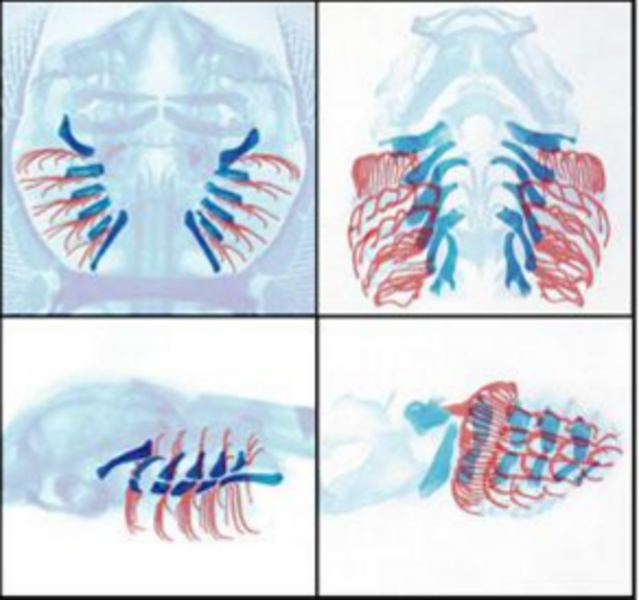From shark gills to human limbs? 'Sonic hedgehog' gene revives an old idea.
Loading...
The evolution of human limbs originated in sharks’ gill arches, suggests Andrew Gillis, a biologist and research at the University of Cambridge in a paper published this week in the journal Development.
Sharks, rays, and skates are cartilaginous fish, which means their gills are protected by arches made of cartilage rather than bone. These protective cartilage-arches have branchial rays: appendages that branch out like fingers or toes. Researchers have long suspected that gill arches were the evolutionary foundation for fins, which became the evolutionary foundation for paired limbs in mammals, but no fossil evidence has ever been found to confirm the idea. But now, Dr. Gillis says that genetic evidence can support this hypothesis.
Scientists have already confirmed that the development of fins and fingers is associated with the Sonic hedgehog gene, named for the Sega video game character. But Gillis and his colleague, Brian Hall, studied the same gene in a skate embryo, and by tweaking a protein at various stages of the embryo’s development, Gillis and Dr. Hall found that the Sonic hedgehog expression was indeed responsible for the development of the branchial rays as well.
“The shared role of Sonic hedgehog in patterning branchial rays and limbs may be due to a deep evolutionary relationship between the two,” said Gillis in a press release from the Marine Biological Laboratory at Woods Hole, “or it may simply be that two unrelated appendages independently use the same gene for the same function.”
German anatomist Karl Gegenbaur first suspected that gill arches were the evolutionary foundation for first fins and then limbs back in 1878. But because Gegenbaur looked at the connection through an anatomical lens, and there were no fossil records to support his hypothesis, his idea was discounted.
“Gegenbaur speculated that gill arches and fins/limbs were evolutionary related because they appear to be built according to a common ground plan,” Gillis told Gizmodo. A conclusion that seems more than reasonable when simply comparing X-rays of gill arches and the human hand. But Gillis says he was finally able to back up Gengenbaur’s prediction by “identify[ing] a molecular feature that could be a key part of that ground plan.”
But Gillis and Hall’s study doesn’t necessarily confirm Gegenbaur’s hypothesis. While it is still possible that the Sonic hedgehog gene’s development in gill arches led to its fin counterparts and then later human fingers, it is also possible, say Gillis and Hall, that branchial rays of gills and fins simply utilize the same gene independently of one another.
“Either way this is a fascinating discovery, because it provides evidence for a fundamental evolutionary link between branchial rays and limbs,” said Gillis in a press release from the University of Cambridge. “While palaeontologists look for fossils to try to reconstruct the evolutionary history of anatomy, we are effectively trying to reconstruct the evolutionary history of genetic programmes that control the development of anatomy.”
Even though the fossil record cannot yet confirm this hypothesis, Gillis says researchers should continue to study evolutionary connections through shark, rays and skates instead of “mutant mice of fruit flies.”
“It is useful to study cartilaginous fishes, not only because they were the group that first inspired Gegenbaur’s theory, but also because they have a lot of unique features that other fishes don’t,” Gillis said in the Cambridge release, “and we are finding that we can learn a lot about evolution from these unique features.”






